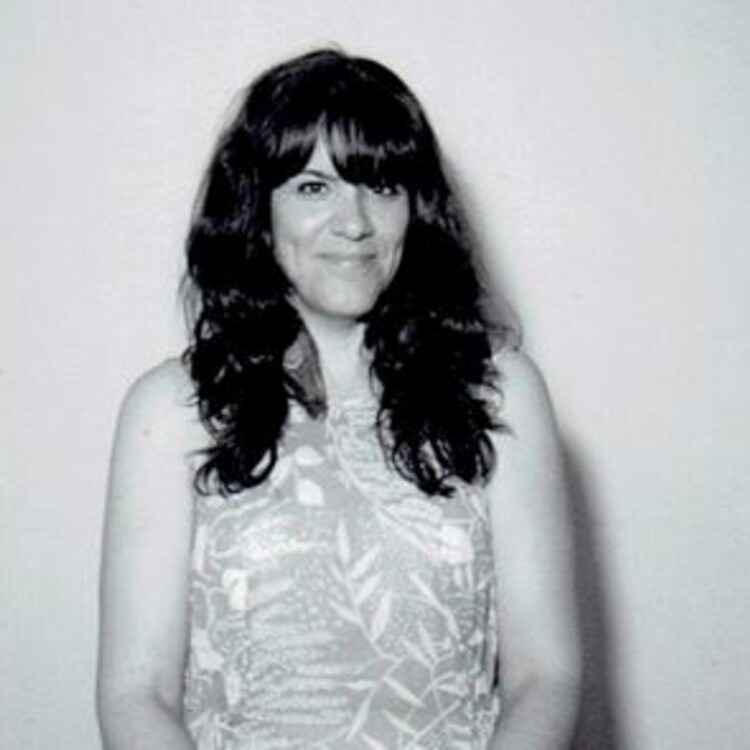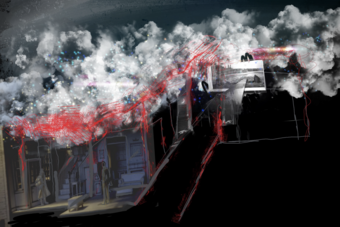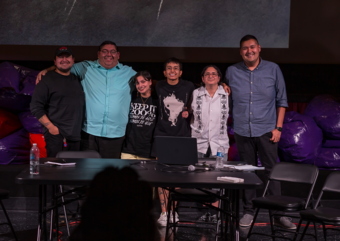The Unicorn Paradox or What Is Design Anyway?
What does a designer do? This question, posed to my undergraduate design students every semester always elicits a panicked, paranoid moment of tension, as they contemplate whether I am tricking them or simply stating the obvious. “A costume designer makes costumes—right? A set designer builds scenery.” It’s what they do!
Recently, I came across an article that was published in a conservative online journal in which the author, an economist of no particular note, decided he was fed up (fed up!) with some of University of North Carolina at Chapel Hill’s “useless” and “suspect” graduate degree programs. Read: graduate programs that were not in STEM (science, technology, engineering, and mathematics) fields. And of all the programs he could have chosen as emblematic of unnecessary graduate education, he selected UNC-CH’s MFA program in… Costume Technology.
Why Costume Technology stood out as a particularly egregious example of wasteful higher education is a bit of a mystery. Perhaps he feels that the world definitely needs more actors, directors, and writers, but since he doesn’t actually know what a “costume technician” does, that seemed like a good place to start eliminating stuff. He certainly spoke about the students (whom he did not research or speak to) in tones of dripping scorn and righteous disbelief that might be reserved for people getting a PhD in the physiology of leprechauns. He cited required classes in costume history and draping as ludicrous examples of fake courses invented to drain the precious educational resources of the great state of North Carolina, implying that the study of history through fashion has all the intellectual rigor of spaghetti, and might as well be called Introduction to Kardashian Pantsuits: The Bootying of an Age. Despite the fact that UNC-CH is one of the top institutions for study in design and production, with graduates gainfully employed at some of the most prestigious arts institutions in the world, and the fact that most of these students pay out of state tuition, this gentleman seeks to convince us that the six individuals studying the black magic ways of costume technology are single-handedly shaming America’s public university system with their frivolous degrees in nonsense.
Designers are the unicorns of the professional theatre—exotic creatures from afar, who show up out of nowhere bearing magical objects that solve everybody’s problems… who knows how or where they come from, before they vanish into the mists of opening night?
I would love to just chalk all this up to the case of one misinformed dude spouting off about something he doesn’t understand, but unfortunately, there are way too many people in our own industry who don’t actually know much more about these fields, and who share these dismissive attitudes towards designers and artisans in theatre. And some of those people are making a lot of the decisions that affect designers directly (can you hear me now, Tonys?). Designers are the unicorns of the professional theatre—exotic creatures from afar, who show up out of nowhere bearing magical objects that solve everybody’s problems… who knows how or where they come from, before they vanish into the mists of opening night? The inability of an undergraduate drama major to clearly define what exactly it is that theater designers do is at the heart of a collaborative dilemma that reaches from my classroom to our design studios and into the very heart and soul of theatre today. The impact on collaboration is tangible, because the false perceptions about designers are found in both academic and professional settings, in the critical perception of the work, and in people influencing the industry from the ground up. Designers must confront these misinformed views about their field in developing collaborations, in the acquisition of resources and fair pay, in creating more opportunities for individuals from diverse backgrounds, and in supporting the dignity of our work, as well as advocating for what we need to do it well. Because if no one really understands what you do, how can they fully collaborate with you or support you in the collaborations you engage in?

What Designers Do
I am a professional visual artist and storyteller whose medium is garments or spaces. I’m a colleague, friend, psychologist, and stylist all at once. I have to understand an actor’s process, how it works, how to support it, how to make an actor feel confident and clear in their performance. I’m not a director, but I have to anticipate what the director needs before they can even articulate it for themselves. I’m collaborator and champion for my other designers. I’m not a playwright or dramaturge, but I analyze and research and scrutinize the text like a detective solving a puzzle. I’m insulted when people imply that designers aren’t intellectual. Designers create the visual world of the play using extensive training in fine art, research, technical theatre, and a wide-ranging knowledge of theatre history, world history, current events, and fashion history and theory. We’re often the most knowledgeable people in the room—just ask us.
It’s important to understand what designers do (versus what a technician or staff member does or should be doing) and what resources are needed for production. The magic of theatre doesn’t bestow upon me powers to magically produce $10,000 worth of costumes on a $500 budget, while building my own set, hanging all the lights, and doing all the laundry and repairs. Not only is all that not what a designer does, but frankly, I’m just not quite that magical.
Finding Your Collaborators
I have a specific and particular aesthetic. If you’re a director or producer looking for designers, take a little time to consider what you’re looking for and how our aesthetics might work together. In my opinion, MFA directing programs could use more courses in design and visual thinking to better prepare directors to develop a visual aesthetic. An area that is too often overlooked by many directors is how to conduct a portfolio interview. I can make beautiful, fancy sketches and I have the expensive degree to prove it, but that’s not what is important about my work or what is important about how we might work together.
So You’re A Director
I once literally shut my portfolio and walked away from a guy who spent ten minutes debating if he thought it was okay for me to use half tone paper, or if white paper was better. Too often conversations with young or emerging directors are focused on what the drawings look like. Rather than spending so much time looking at the drawing, try spending more time talking to the person who made it. What are their aesthetic values? What is their passion in theatre? Do you like talking to them? Because if you don’t really enjoy a twenty-minute conversation with someone, you most definitely won’t enjoy spending twenty hours a day locked in a dark room with him or her under enormous pressure—no matter how good that sketch of Hamlet looks. The photo of how it turned out is going to tell you a lot more about how I work than the sketch of what I thought it would look like when money, time, and the actor’s opinion were of no consequence. Try asking questions about how the collaboration worked? What was the seed of this idea? What changed about the project as it progressed? What was the biggest challenge of this piece? You could ask if there are directors someone works with a lot, and take particular note of those pieces, and how they progress over time.
Designers create the visual world of the play using extensive training and a wide-ranging knowledge. We’re often the most knowledgeable people in the room—just ask us.
What Emerging Designers Can Do
And if you’re an emerging designer, remember that a portfolio interview is a two-way street. You are learning about this director as much as they are learning about you, so steer the conversation to the place it needs to go to know if this is a true collaborator. The dynamic in this moment is the first step in building a creative partnership. You’re not going to do your best work for someone you can’t talk with freely and openly. You aren’t going to be excited to come in and paint your fingers to the bone for someone who doesn’t excite you. Please don’t fill your portfolio with existential studio projects of million dollar movies and musicals, unless that’s your jam. Your actual realized work, rough and imperfect though it may be, is a lot more interesting to talk about.
It’s also worth remembering that like all relationships, longtime artistic partnerships need room to grow and change. A few years ago, I was designing an especially challenging piece for one of my favorite directors who I’ve always found working with to be incredibly easy and fun. The stress and challenges of the project seemed magnified by some really deep miscommunications and frustrating missed connections. I was worried that maybe we wouldn’t work together again. Was this one of those designer/director pairings that had outlived its spark? After the show opened, thinking back on the process, I realized that I was guilty of letting this creative partnership grow stagnant, and that the director’s modus operandi had changed. Shorthand can be great, but I was resting on assumptions about how we had previously worked, not keeping my actions and decisions vital. Happily, we did work together again soon after that, and by using different approaches to problem solving, the partnership was totally reinvigorated and the resulting work was one of the best pieces we ever produced. I use that experience as a spur to more deeply examine other artistic partnerships and to be very clear-eyed about whether or not old habits or modes of working are still productive. It’s important not to take our fellow artists for granted, or fail to realize the changes in their aesthetics and methods.
I’m Talking to You, Producers
I want to appeal to producers that we need a greater appreciation for the bonds between artists (designers and directors, playwrights and designers), because that’s how artists are able to continue growing and working together in long-term partnerships. Collaborative chemistry is not created equal; it exists more strongly in some groups or artistic teams than it does with others. When directors ask for a particular designer, it’s because they are creating relationships that will grow over multiple projects to support the best possible work. Too many times I have been told “it’s a contemporary show, so really anyone can do it.” No, “anyone” cannot do it. And it’s not about nurturing local talent if you’re bringing an out of town director and five actors from New York or LA. Designers need the same opportunities as actors, writers, and directors to pursue longtime working relationships with each other.
Recently, I designed two shows totally different in scope and size, both of which contained a mix of longtime and new collaborators, both of which were at theatres where they truly understand and support designers. And it was a refreshing reminder of how totally exciting and fun it can be to come to work every day, and how great it is to work with smart, amazing, creative people over a period of years and then to bring new people in to share in that dialogue.
So, that’s my appeal to everyone—to become more awake and cognizant of what designers actually do. To celebrate and support design, through more cross-disciplinary training, better collaborations, and pushing industry leaders to recognize the tremendous contribution that design makes to live theatre performance. One small step in my improbable dream to let every man, woman, child, and economist know that Costume Technology is a real thing. So, to the Costume Technology students of UNC-CH and designers everywhere, keep calm, sew on, and if you crazy kids discover the alchemical formula for turning muslin into gold during your potions class, let’s decide to keep that one in the family. We unicorns still need a little of our mystery.













Comments
The article is just the start of the conversation—we want to know what you think about this subject, too! HowlRound is a space for knowledge-sharing, and we welcome spirited, thoughtful, and on-topic dialogue. Find our full comments policy here
Wonderful article!
The suggestions you make about the ideal collaborative process between the designer and the director are great.
It is priority to understand the person working with you personally and artistically even if you've worked with them before.
I am meeting with a lovely set designer now.
I will absolutely keep this in mind!
Thank you.
Thank you for your insights! A director who appreciates, "gets", the centrality of design to storytelling and emotion in theatre ends up with not only richer and more affecting plays, but also experiences a much more satisfying creative process along the way.
In the U.S. the legitimacy of art education and design seems to always be questioned. So frustrating!
Thank you everyone for your comments, and for reading the article. To address some of the comments:
My impression that he was speaking of NCSA is probably because it was forwarded to me initially from someone who went to NCSA, and other commentators on a closed Facebook group were referring to the program in question as being NCSA. So that may be an error, but I stand by my criticism of his article as a whole.
This is wonderful and amazing. Thank you for speaking up. So often I feel dismissed throughout the entire play process - does no one what to hear my insights from the script? How I feel about transitions? The overall feel of the production? And the comments about interviewing the director as well hit home. So many times I am so desperate just to have been asked to do a production, I don't say no even when I should.
You're not alone!
Slight correction: the program the article was complaining about is at UNC-Chapel Hill and one of its complaints was that the graduates (who have a 100% job placement rate) don't work in North Carolina (incorrect), but in NY and LA, even though the degree is funded (claimed the article) by NC taxpayers. The article is idiotic. I honestly think when he spoke derisively about classes like History of Western Fashion that he thought it meant cowboys.
the scary thing is this guy influences policy in north carolina.
In the comments section to his article, a number of NC graduates commented that they would have loved to stay and work in NC, but the drastic cuts to arts funding had left them few alternatives in that area. It was one of the reasons that the article made a strong impression on me- first someone who advocates to cut arts funding and arts programs from the public sphere succeeds in doing so, then they complain that arts education is not necessary because the people who attain it in the state's graduate programs aren't benefitting the state.
As a designer living and working in North Carolina, I will sadly interject that arts education -- indeed, education in toto -- is under attack throughout the state, not just the School of the Arts. Recently the theatre major was discontinued at North Carolina Central University while at NCSA the film music composition major was eliminated...
No rest for the wicked stage, I guess.
Apologies for the tangent. We now return you to your regular programing...
the guy was talking about UNC-CH -I don't think he knows we exist at UNCSA.
and i have to say that film music composition was really in the wrong place (school of film). it might have done better in the music school or as a cross disciplinary program.
he's still a piece of trash though.
I kinda wondered. I know the Costume Technology program at UNC-CH is one of the best in the country, but I know very little about NCSA.
Pieces of trash -- even whole trash -- would be welcomed in my house long before I'd let in Art Pope or his henchmen.
lol. no one knows we exist at NCSA. you should come visit sometime (don't know where in NC you're based)
I think this is an interesting read, but I wish sound design had been given a specific mention. It could read: “Designers create the world of the play” rather than “the visual world”. We’re designers too.
I'm sorry you felt that way. I definitely include Sound Design as essential and vital, and yes, I was thinking of them as being included. Since I am a visual designer, the world visual is just so strongly associated with my lived experience of being a designer that I was coming from that place, but it wasn't my intention to exclude Sound design. I think a clearer statement would have been the "visual and aural world of the play."
What a strange post. Thanks for defending what designers do, but an even less-understood field to the vast world is Costume Technology, which is what the original published article complained was not valid. We have to be artists and architects rolled into one. And we are usually not designers. I have given up trying to explain the difference to my mother-in-law!
I am a costume designer and not a costume technician. So while the misunderstanding about what costume technology is inspired me to write the article, because I find the lack of understanding and clarity about what designers and technicians do to be so pervasive, the goal of my piece was to explain what designers do, not explain exactly what costume technology is. I'm positive that costume technicians could (and should!) explain their vital work themselves.
Thank you Meghan for writing this. I wish I could highlight this and post it in bold everywhere. Thank you for expressing what it is that we do as Costume Designers.